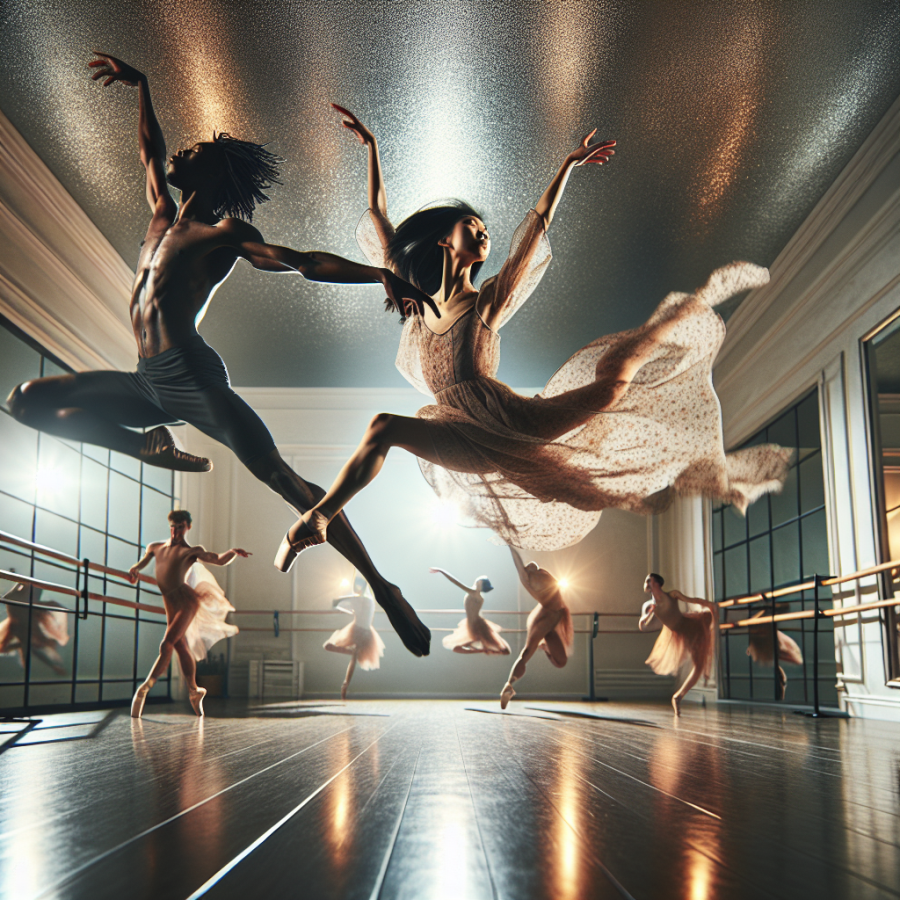Exploring the Transcendent Power of Movement in Dance
The rhythmic stirrings of dance are not simply a matter of choreographed steps and fluid movements. There is an unspoken, transcendent power when the human body moves in rhythm to music. In exploring this dimension, we delve into the world of dance and unearth the profound impact movement has on both dancers and audience members alike.
Movement in dance is a catalyst for emotional expression and communication. It acts as a universal language that surpasses barriers of speech and is understood by all, regardless of cultural or ethnic backgrounds. This communicative power of dance allows performers to express a wide range of emotions, from the deepest sorrow to the highest joy. The synchronization of body movements with the beat of music can amplify feelings and transfer the energy and intent behind the dance from the performer to the observer.
The transcendent power of dance is also a route to personal transformation and healing. For dancers, movement becomes a form of therapy, a way to release emotions and to externalize feelings that might be too complex or overwhelming to articulate verbally. The act of dancing allows for an exploration of self and can lead to enhanced self-awareness and mindfulness. Within this space of movement, dancers often report experiencing a state of flow, where their movements are at once spontaneous and controlled, and they are completely immersed in the present moment.
Furthermore, dance can serve as a bridge to connect with spirituality or the sublime. Some cultures and traditions have used dance as a form of worship or communion with the divine. Sacred dances, often passed down through generations, embody the spiritual narratives and beliefs of their people. These ritualistic movements can be thought of as prayers in motion, with dancers reaching beyond the physical realm to connect with something larger than themselves.
Even in secular contexts, the act of dancing can have a profound, otherworldly quality. The combination of music, movement, and sometimes, theatrical elements can create an atmosphere that temporarily lifts both the performer and the audience out of the mundanity of daily life into a shared, elevated experience. This is evident in performances that deeply move the audience, leaving them with a sense of awe or inspiration long after the final bow.
Lastly, the social and communal aspects of dance cannot be overlooked. Dance frequently brings people together, creating a shared energy and a sense of unity among those moving to the same rhythm. It fosters community, blurs individual differences, and builds connections. This communal aspect of dance can be incredibly powerful, reinforcing social bonds and sometimes inciting collective change through synchronized movement.
Read also:
Athletes Embrace Charity: The Rise of Crypto Donations
Unleashing Emotion and Connection Through Dance's Universal Language
The power and magic of dance lie not just in the steps, costumes, or the music that accompanies it, but in its unique ability to communicate and evoke emotions. With every movement, dancers speak a universal language that transcends spoken words and crosses cultural barriers, connecting with audiences on a primal and intimate level.
At the core of dance's appeal is its universality. No matter where you are from or what language you speak, the human body's ability to move and express itself is something that every person can understand and appreciate. This shared physicality enables dancers to express joy, sorrow, passion, or any other human emotion, allowing spectators to experience those feelings alongside them.
The rhythm that underlies most dance forms is another element that connects deeply with people. Our heartbeats, breathing, and the cadence of our walking all revolve around rhythmic patterns. Therefore, when a dancer moves to a rhythm, it resonates with the internal rhythms of the observer, creating an invisible thread that links the performer with the audience.
Moreover, dance often tells a story, revealing narratives of love, conflict, community, or individual growth. These stories are universally relatable because they mirror the human experience. For example, a dance might depict the struggle against adversity or the celebration of a personal victory. Even without words or a clear storyline, the intensity and direction of the movements can guide viewers through an emotional journey.
Dance can also be a communal experience, whether in a grand ballet performance or a flash mob in a crowded city square. It brings people together, participating either as performers or as part of the audience. This shared experience can generate a sense of unity and belonging, as individuals become part of something larger than themselves. Dance becomes a medium for shared feelings, creating a communal atmosphere where emotional barriers are broken down.
Furthermore, the physiological impact of dance on both dancers and watchers can't be overlooked. The release of endorphins through physical activity and the visual stimulation of watching rhythmic movements contribute to a heightened state of emotional receptivity. This biochemical response helps forge an even deeper connection between the dancers and their audience, intensifying the transfer of emotion and the sense of mutual understanding.
In essence, dance serves as a potent form of expression, capable of unlocking the universal human capacity for emotional connection. It is a dialogue conducted through the body, as dancers convey their innermost feelings without uttering a single word.




